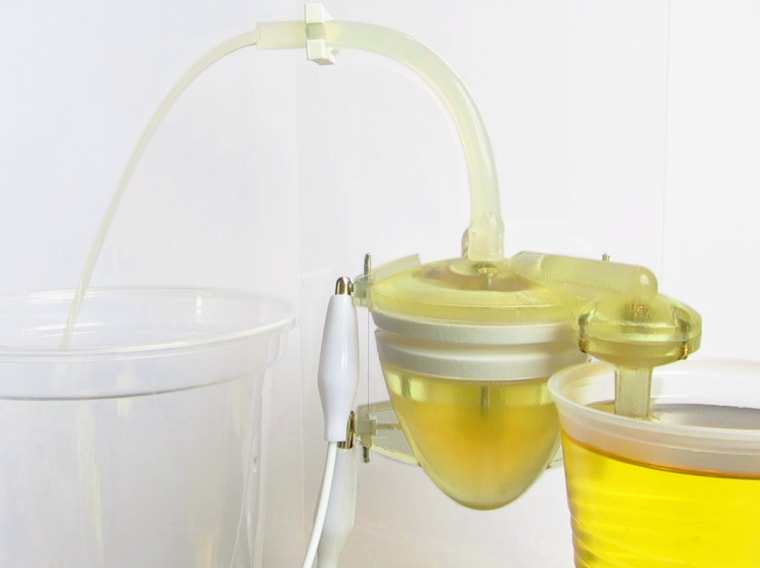
You could say that one man's waste is another bot's energy drink. Researchers are exploring the possibility of building robots powered by artificial beating "hearts" with human urine flowing through them like blood.
Because you don't get much energy out of pee, this mechanism won't make a lot of sense for most robots. But such bots might come in handy for stationary tasks like, say, measuring gas levels.
The robotic "heart" pumps every 3.5 seconds, for about 30 seconds, then rests. After about 3 hours, the heartbeat is triggered again.
The "muscles" are made of a shape-shifting titanium-nickel alloy. The material expands when a bolt of electricity passes through it, then cools off and shrinks right back to its original shape, squeezing a chamber filled with the fluid, just like a biological heart.
Compared to electrical motors, artificial muscles are "simpler mechanically and therefore less likely to break down," Peter Walters, a researcher at the University of Bristol in the U.K. who designed the new pump, told NBC News. The robot that will carry this around has yet to built.
Where does the urine go? Into a fuel cell, in which microbes eat through energy-rich compounds in the fluid, harvesting electricity, which will then power the bot.
As a demonstration of the power of pee, in July Walters and his colleagues showed how the microbes could extract enough energy to run a cell phone.
For robots, the system has limitations. "We don’t extract a huge amount of energy from the urine," Walters acknowledged, so regular batteries are a better bet for bots that need to move around a lot, like the hyperactive Roomba.
Bots that could use the setup would be suited to low-power tasks, perhaps sustained over an extended period. Environmental sensors, for example, which need to stay online and recording for hours and hours unsupervised, are examples of one such application, Walters said. Just make sure there's a bathroom handy.
The authors of "Artificial heartbeat: Design and fabrication of a biologically- inspired pump," published in the Friday issue of Bioinspiration and Biomimetics include Peter Walters, Amy Lewis, Andrew Stinchcombe, Robert Stephenson and Ioannis Ieropoulos.
Nidhi Subbaraman writes about technology and science. You can follow her on Facebook, Twitter and Google+.